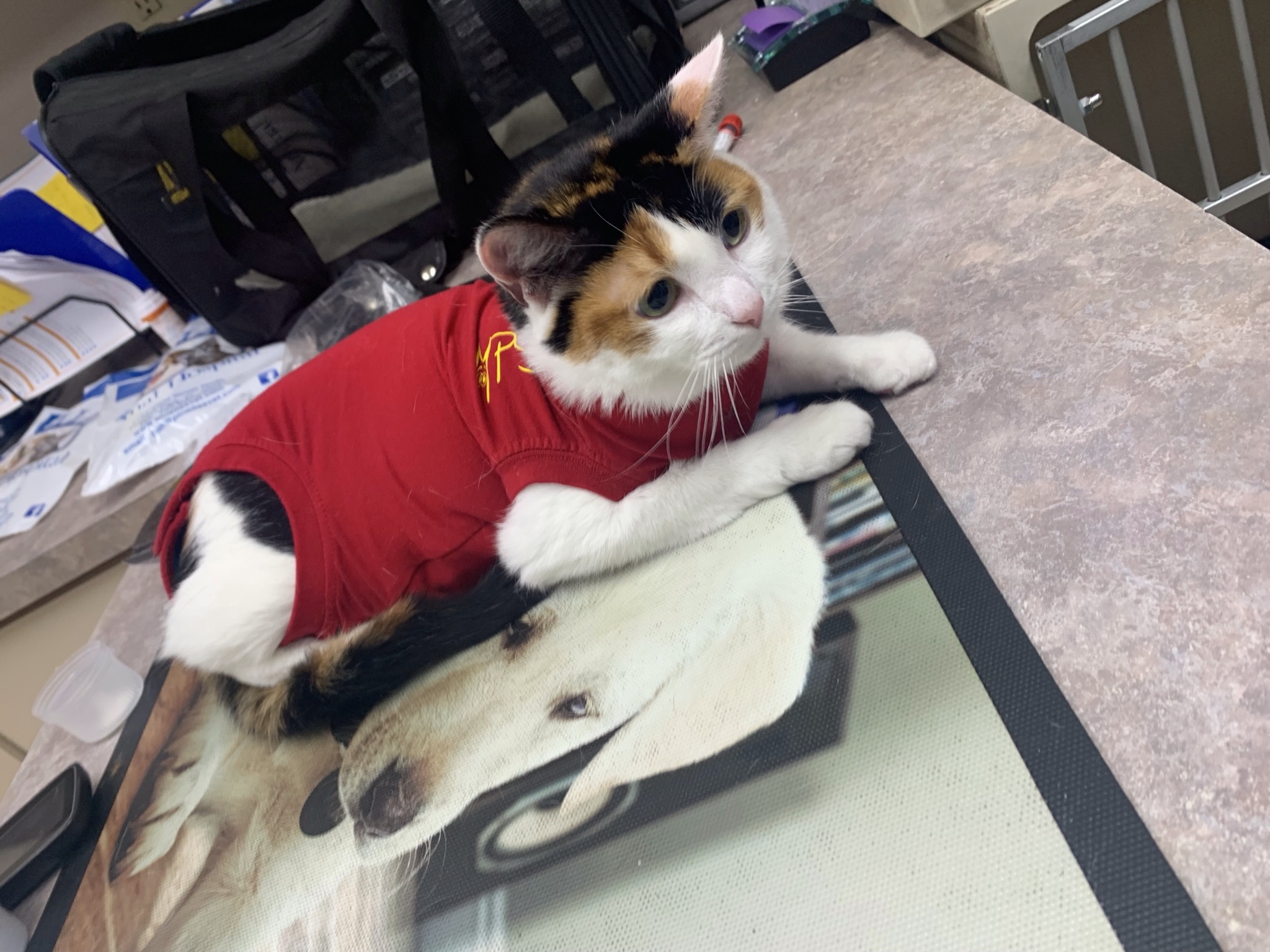Commitment to Care: Kit Kat

Meet Kit Kat, a seven year old Calico who came into the clinic for her biannual physical exam. During her exam with our relief doctor, Dr. Klemawesh, it was noted that Kit Kat was presenting with signs of tartar and gingivitis or redness of the gums, sure signs of stage 2 dental disease. With these findings, she recommended that Kit Kat schedule an Oral Health Procedure.
In preparation for her surgery, routine preoperative blood work was performed to assess Kit Kat’s ability to handle anesthesia. While everything else was within normal range, Kit Kat did have readings of high levels of glucose in her urinalysis and blood work. Dr. Wallen diagnosed Kit Kat with diabetes and recommended Kit Kat come back for a follow up exam to monitor her blood glucose levels and to start daily administration of insulin to regulate these levels.
The treatment plan for a pet like Kit Kat with diabetes is to have their parents administer insulin at home with regular glucose curve tests. With any pet who is going to be given insulin at home, before leaving the clinic we will teach you how to administer the insulin and work with you until you are comfortable with the procedure.
After a few weeks of in clinic glucose checks we were able to get Kit Kat’s glucose levels within a normal range. Once her levels were regulated, Kit Kat had a Libre device placed for continual daily monitoring of her glucose readings. This new method is more accurate and less stressful for your pet because they can relax at home while you obtain pain free glucose readings. At this point we were also able to schedule Kit Kat’s Oral Health Procedure, which was her original reason for her visit.
Since monitoring Kit Kat’s glucose levels and having her parents give her daily insulin injections she is feeling much better and we’re happy to report she is back to her old self. Had Kit Kat not come in for routine care we would not have known about her potential illness until she was showing more severe symptoms which could have been life threatening. This success story is a perfect example of why we recommend yearly preventative blood work to all of our patients.
What is Diabetes?
Diabetes in cats is when the pet is unable to control the sugar level in their blood due to an insulin deficiency. Pets are more at risk of developing diabetes if they are overweight with the peak onset being in pets around 8 years old. Other factors can be poor nutrition, hormonal abnormalities, and stress. Diabetes in pets can be managed with changes to nutrition, exercise and medication.
While the signs of diabetes mirror other diseases, notify your veterinarian if your pet is experiencing any of the following symptoms:
- Increased thirst
- Rapid weight loss
- Not eating
- Tired, lack of energy
- Vomiting
- Increased urination
Please note: Once diabetes is diagnosed, it is important that your cat is regularly monitored by your veterinarian. They will check your cat’s glucose levels and will adjust medication accordingly to keep your cat stable.
